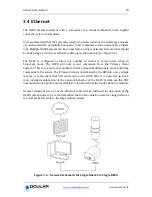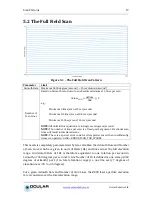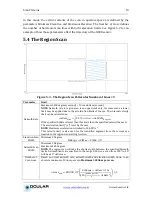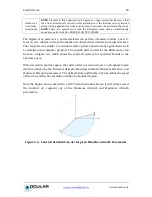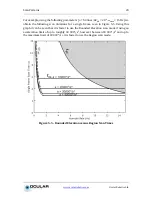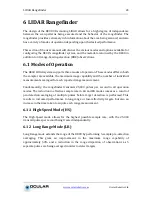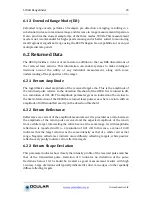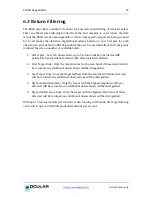
LIDAR Rangefinder
25
www.ocularrobotics.com
Ocular Robotics Ltd
6.1.3
Extended Range Mode (ER)
Extended range mode performs 50-sample pre-detection averaging, resulting in a
substantial increase in maximum range and decrease in range measurement dispersion.
It also provides the slowest sample rate of the three modes, 500Hz. This measurement
mode is not recommended for high speed scanning and is better suited to monitoring
small regions at significant range using the RE08's Region Scan capabilities or even just
multiple discrete points.
6.2
Returned Data
The RE08 provides a rich set of meta-data in addition to the raw RBE observations of
the received laser returns. This information can enable systems to make intelligent
decisions around the utility of any individual measurement, along with some
understanding of the properties of the target.
6.2.1
Return Amplitude
The logarithmic scaled amplitude of the received target echo. This is the amplitude of
the returned pulse relative to the detection threshold of the RE08. It is returned in dB,
to a resolution of 0.01 dB. The amplitude parameter gives an indication of how close to
the limit of detection of the RE08 the returned laser pulse was, where a return with an
amplitude of 0 dB would fall exactly on the detection threshold.
6.2.2
Return Reflectance
Reflectance is a variant of the amplitude measurement. It is provided as a ratio between
the amplitude of the return pulse received and the expected amplitude of the return
from a white target, intersecting the entire beam, at the same range. As with amplitude,
reflectance is reported in dB, to a resolution of 0.01 dB. In this case, a value of 0 dB
indicates that the target return was the same intensity as that of a white card at that
range. Negative reflectances indicate more diffusely reflecting targets, while positive
reflectances typically indicate retro reflective targets.
6.2.3
Return Shape Deviation
This parameter indicates how closely the intensity profile of the received pulse matches
that of the transmitted pulse. Deviation of 0 indicates no distortion of the pulse.
Deviations below 10-15 should be treated as good measurement results with high
accuracy. Large deviations will typically indicate dirt, dust, rain, edges or other spatially
diffuse reflecting targets.



